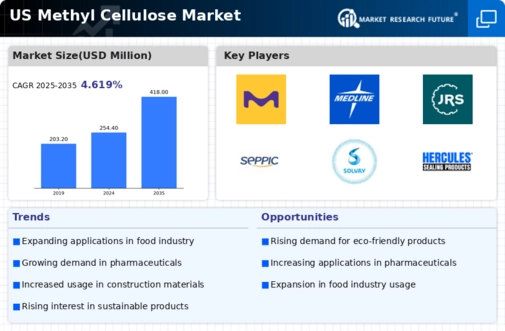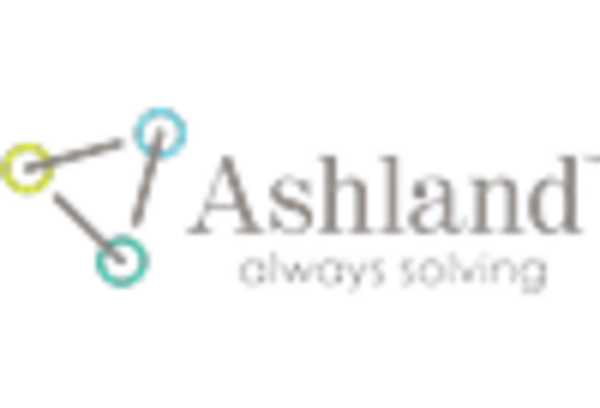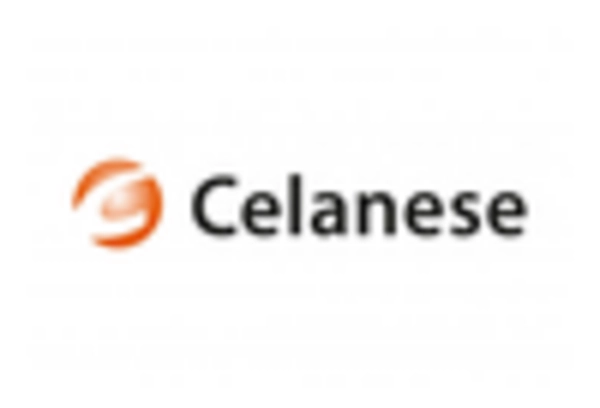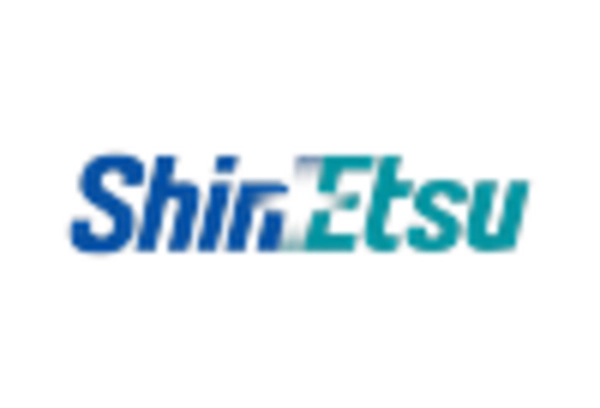Growth in Dietary Supplements
The growth in the dietary supplements sector is emerging as a key driver for the methyl cellulose market. Methyl cellulose is often utilized as a binding agent and thickener in various supplement formulations, including tablets and powders. As health consciousness among consumers continues to rise, the demand for dietary supplements is expected to increase significantly. The dietary supplement market in the US is anticipated to reach approximately $50 billion by 2026, reflecting a growing trend towards preventive healthcare. This surge in demand presents a substantial opportunity for the methyl cellulose market, as manufacturers look to enhance the texture and stability of their products. Consequently, the methyl cellulose market may experience a notable uptick in consumption as it becomes an integral component in the formulation of dietary supplements.
Expansion of Construction Sector
The expansion of the construction sector in the US is a pivotal driver for the methyl cellulose market. Methyl cellulose is widely utilized as a thickening agent and binder in various construction materials, including adhesives, sealants, and mortar. As the construction industry continues to grow, driven by urbanization and infrastructure development, the demand for methyl cellulose is expected to rise. In 2025, the construction sector is projected to reach a value of approximately $1.5 trillion, indicating a robust growth trajectory. This growth is likely to enhance the consumption of methyl cellulose, as it plays a crucial role in improving the performance and durability of construction products. Consequently, the methyl cellulose market is poised to benefit significantly from this trend, as manufacturers seek to meet the increasing demand for high-quality construction materials.
Rising Demand in Personal Care Products
The rising demand for personal care products is a significant driver for the methyl cellulose market. Methyl cellulose is commonly used as a thickener, emulsifier, and stabilizer in various personal care formulations, including lotions, creams, and shampoos. As consumer preferences shift towards high-quality and effective personal care products, manufacturers are increasingly incorporating methyl cellulose to enhance product performance. The personal care market in the US is projected to grow at a CAGR of around 4.5% from 2025 to 2030, indicating a robust demand for ingredients like methyl cellulose. This trend suggests that the methyl cellulose market will likely see increased opportunities as brands seek to differentiate their products through innovative formulations that leverage the unique properties of methyl cellulose.
Technological Advancements in Manufacturing
Technological advancements in the manufacturing processes of methyl cellulose are likely to drive market growth. Innovations in production techniques, such as improved synthesis methods and enhanced purification processes, can lead to higher quality products with better performance characteristics. These advancements may also reduce production costs, making methyl cellulose more accessible to various industries. As a result, the methyl cellulose market could experience increased adoption across sectors such as food, pharmaceuticals, and personal care. Furthermore, the introduction of new grades of methyl cellulose tailored for specific applications may expand the market's reach. The ongoing research and development efforts in this area suggest a promising future for the methyl cellulose market, as manufacturers strive to innovate and meet evolving consumer demands.
Increased Regulatory Support for Food Safety
Increased regulatory support for food safety is a crucial driver for the methyl cellulose market. As food safety standards become more stringent, manufacturers are seeking reliable ingredients that can enhance product safety and quality. Methyl cellulose is recognized for its ability to improve texture and stability in food products, making it a preferred choice among food manufacturers. The US food industry is projected to grow at a CAGR of around 3% through 2025, driven by consumer demand for safe and high-quality food products. This trend indicates that the methyl cellulose market will likely benefit from heightened regulatory scrutiny, as companies strive to comply with safety standards while maintaining product integrity. As a result, the demand for methyl cellulose in food applications is expected to rise, further solidifying its position in the market.

















Leave a Comment